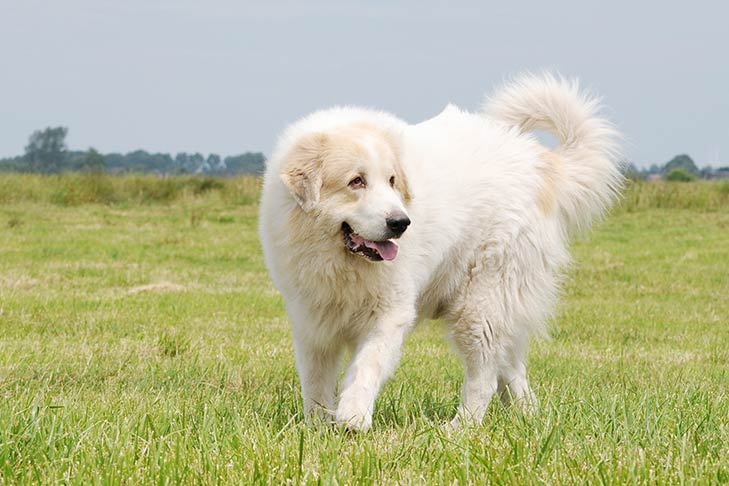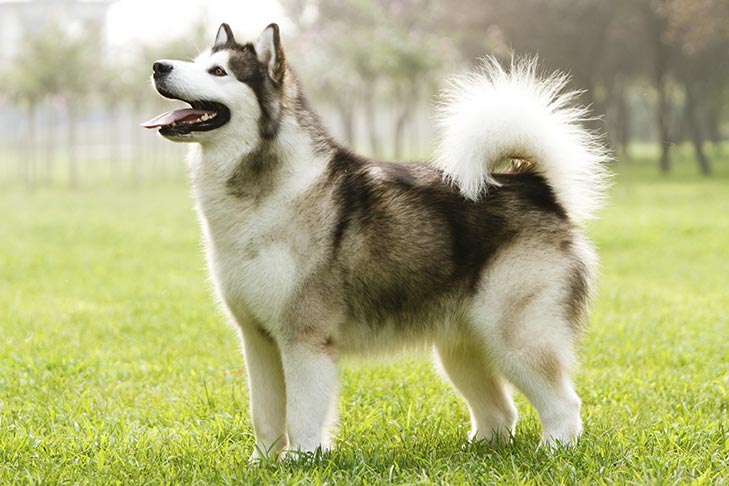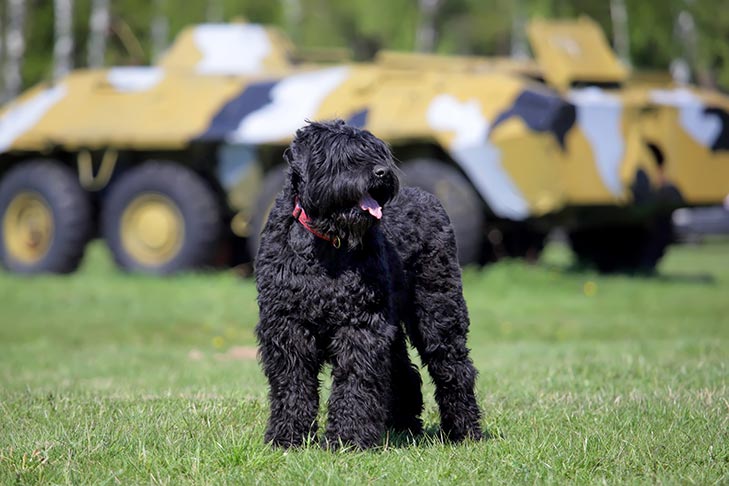
The Working Group contains the blue-collar workers of the dog world. These working dogs guard flocks and families, pull carts, haul freight, perform rescues, fight wars, and do other hard work in the service of humankind. Because of their size and strength, it’s very important that people breed them responsibly. This will also help ensure puppies have sound, stable temperaments. Here, we consider several representative working breeds and the special considerations faced by their breeders.
Understanding the Working Group
But first, a brief history of the Working Group. At the dawn of civilization, humans first domesticated dogs for use as watchdogs and flock guardians. After these dogs worked hard for about 15,000 years, our understanding of them changed in 1983. By then, the AKC family of breeds had grown from the two original breed groups, Sporting and Non-Sporting, to six groups.
By far the largest was the Working Group. It contained 32 breeds traditionally considered working dogs, plus 14 herding breeds. The AKC broke up this group by reassigning the herders to the Herding Group, leaving 18 breeds in the Working Group. Today, the Working Group has 31 breeds, including these four representative breeds.
Alaskan Malamute

The Alaskan Malamute is a powerful, rugged working dog weighing 75 to 85 pounds. Everything about Mals suggests their origin as an arctic sledge dog: The heavy bone, deep chest, powerful shoulders, and dense, weatherproof coat all scream, “I work hard for a living!”
The Alaskan Malamute gets its name from the Mahlemiut, an Inuit tribe that settled in north Alaska a long, long time ago. The dog the Mahlemiuts developed is a sledge dog, created to haul heavy loads at low speeds over long distances. (Sled dogs, like the Siberian Husky, pull lighter loads at faster speeds. Huskies are racers; Malamutes are freighters.)
Mals are pack animals. A pack can have just one leader. And in your family “pack,” the leader must be the owner. If a Mal doesn’t respect you, you may wind up obeying them instead of the other way around.
A responsible breeder will advise their clients to begin firm but loving training in early puppyhood, while the dog is still small enough to control. That said, a well-behaved Alaskan Malamute is a joy to be with — playful, gentle, friendly, and great with kids.
Black Russian Terrier

The Black Russian Terrier, a guard dog of the Siberian steppes, can tip the scales at 140 pounds and stand as high as 30 inches at the shoulder. They’re much taller when you take into account the huge, brick-shaped head. The tousled, all-black coat is warm enough to allow them to patrol some of the coldest habitable places on earth.
The BRT origin story sounds like a subplot in a James Bond movie. In the 1930s, in a secret location near Moscow, a team of white-coated scientists worked to create a super-dog for the Soviet army. They incorporated about 17 breeds — including Giant Schnauzers, Airedale Terriers, and Rottweilers — into this genetic jigsaw puzzle.
To mellow out the dog’s temperament (particularly important for a giant breed), they bred Newfoundlands into the gene pool. The result was “the Black Pearl of Russia”: a tireless fence dog, swift and powerful enough to pin and hold a prisoner. Their thick coats enabled them to work the Siberian night shift in Stalin-era gulags.
Today, BRTs are more likely to be guarding suburban families than political prisoners. Blackies can be intimidating and dominating, which means they might not be a good fit for first-time owners. However, these smart, sensitive dogs are beautifully trainable when you apply a firm but loving touch. Lots of early socialization helps BRTs determine what is and isn’t a true threat to their owners.
Doberman Pinscher

In the 1890s, a German tax collector (who was also apparently a master dog breeder) named Louis Dobermann bred a protection dog to accompany him on the road. There are different theories about which breeds Herr Dobermann utilized to create the Doberman Pinscher. Possibilities include the Rottweiler, Greyhound, Manchester Terrier, and Miniature Pinscher.
Doberman Pinschers are compact dogs — muscular, fast, and powerful — standing between 24 to 28 inches at the shoulder. The body is sleek but substantial, covered with a glistening coat of black, blue, red, or fawn, with rust markings. These elegant qualities, combined with a noble, wedge-shaped head and an easy, athletic way of moving, have earned Doberman Pinschers a reputation as dog royalty. A well-trained Doberman Pinscher on patrol will warn off all but the most foolish intruders.
This description applies to Doberman Pinschers bred by sound, responsible breeders, dogs who have been well-trained and socialized since puppyhood. A Doberman Pinscher who meets these conditions is a loving pet, a world-class family guardian, a versatile canine athlete, and a credit to their community.
Doing your homework and finding the right dog breeder is vital when it comes to any purebred dog. But it’s extra-important when acquiring a quick, powerful dog with strong protective instincts. When you do it the right way, welcoming a Dobie into your home can repay your efforts a million times over.
Great Pyrenees

Frequently described as “majestic,” the Great Pyrenees is a big, very strong mountain dog. These determined guardians usually exhibit a Zen-like calm, but they can quickly spring into action and move with grace and speed to meet a threat.
Pyrs were bred centuries ago to work with shepherds and herding dogs in the Pyrenees Mountains, the natural border between France and Spain. The Pyr’s job was to watch the flock and ward off predators, whether wolves, bears, or livestock rustlers. Their natural patience came in handy when sitting atop a freezing-cold mountain for days on end with nothing to do but look at sheep. Their courage when defending their flocks is legendary.
Not many modern Pyr owners use their dogs to guard sheep. Today’s companion-bred Pyrs are mellow housedogs that guard their home and family. A well-bred Pyr is never aggressive. For them, violence is a last resort. They prefer to stand their ground and “worry” away intruders.
Pyrs love kids and bond tightly with their owners and families. Since Pyrs are independent thinkers, it’s always a good idea to train them with patience and kindness.

